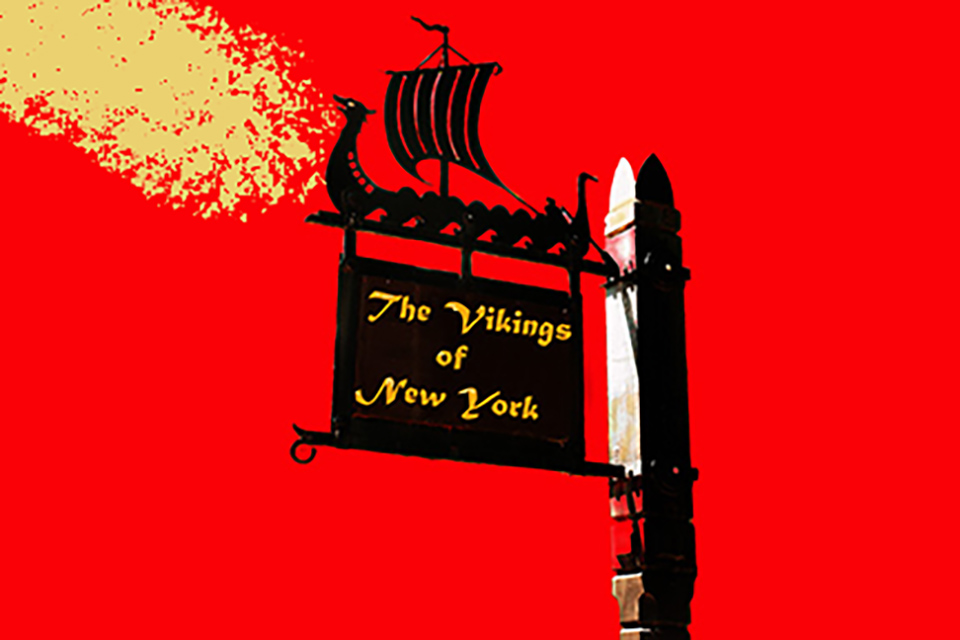
Among the many innovations to change the city for the better, none was more exciting and more curiously related to religion than the roller coaster.
On this day June 16 in 1884, Lemarcus Adna Thompson opened the first roller coaster built in America. There were some other ideas for a roller coaster that were never built and a mining train that served as an adventuresome up and down ride in the mountains for tourists. But Thompson built the first train that was specifically designed to be a roller coaster.
“The Switch Back Railway” opened its doors on West Tenth Avenue in Coney Island, Brooklyn and almost immediately people were lining up for the 5-cent ride at six miles per hour down 600 feet of track. The Brooklyn Eagle noted that the roller coaster brought in $600 in one day in August 1884. It cost only $1600 to build.
The Coney Island roller coaster was called a switch back train because one train took you up and down to a platform from which the passengers dismounted and walked up the stairs to take the round trip on a separate track. This method served as a safety precaution against the trains running into each other.
Thompson was a tinkerer who had successfully made a machine to manufacture a seamless stocking and co-founded the famous Eagle Knitting Company. But the stress of business sent him retreating into the Arizona desert. Thompson was a religious man and morally serious about living out his Christian faith. He spent a short time at Hillsdale College before he took his inventive talents to the market.
He was rather bored taking a long vacation in the desert, so he hustled back to work determined to find some way to do a good work for other people. He also found a way of having fun while doing good.
He noticed that as young people were flocking into the cities, the amusement alternatives tended toward the seedy like the saloon and the brothel. The poor had limited options for a vacation from the stresses and dirtiness of the city. He decided to do something to improve the city scene for everyone.
He envisioned that amusement parks suitable for the whole family would result in worthier lives and fun too. He wrote, “Many of the evils of society, much of the vice and crime which we deplore come from the degrading nature of amusements…to substitute something better, something clean and wholesome, and persuade men to choose it, is worthy of all endeavor. We can offer sunshine that glows bright in the afterthought, and scatters the darkness of the tenement for the price of a nickel or a dime.”
Hence, the roller coaster of Coney Island was a product of theological thinking infused into the inventiveness of its creator. Surely, it was one of the most entertaining statements of theology ever produced!
Thompson went on to build many roller coasters and develop something he called a “scenic train,” which was a roller coaster that traveled through a scenic route. In Los Angeles and elsewhere, he sailed people through mountains and passed by temples. The American devotion to having a clean good time, as he might have put it, anticipated the scrubbed-up fun of Disneyland.
We consulted many sources on Thompson and his roller-coaster including the very helpful article by Derek Potter, “Theme Park History: L.A. Thompson, the father of the themed roller coaster” in the November 2013 edition of the Theme Park Insider,
Also, thanks to the Rare Book & Manuscript Library of Columbia University for allowing us to reproduce the 1884 print in the Photographs from the Frederick Fried Coney Island collection

Manhattan Jewish Historical Initiative together with Manhattan Borough President Mark Levine and
New York City Councilmember Gale Brewer
invite you to attend
MJHI’s MANHATTAN JEWISH HALL OF FAME
CLASS OF 2024 Induction Ceremony
Rabbi Elie Abadie, Juju Chang, Josh Eineger, Abraham Foxman, Judy Gold, Cantor Yitzchak Meir Helfgot, Dina and Jonathan Leader, Russell Robinson, Moishe Rosenfeld, Ethel Sheffer, Marcy Syms
General Society of Mechanics & Tradesmen
20 West 44th STREET (MIDWAY BETW 5TH & 6TH AVES)
Monday, June 17th, 2024, 5:30-7:30 PM
ADMISSION FREE
LIMITED CAPACITY, RESERVATION REQUIRED
lite refreshments to follow induction
To support MJHI, sponsorships available ($5,000, $2,500, $1000, $500)
RSVP: spuder@council.nyc.gov, lorikweissman@gmail.com, Tina.weiss@yu.edu, hbteich@aol.com,
website: www.manhattanjewish.org
The Manhattan Jewish Historical Initiative (MJHI) was founded in 2010 by current leading members of the Manhattan Jewish Community in collaboration with the Manhattan Borough President and other elected officials. The purpose is to record the history of the Manhattan Jewish Community from a populist, interactive perspective, and through public forums and events. MJHI has a website (www.manhattanjewish.org), and social media presence that are attracting and involving many. MJHI’s Manhattan Jewish Hall of Fame, launched seven years ago, recognizes individuals who were born, lived, or currently reside in Manhattan, and have made extraordinary contributions during their lifetimes.


Get More with Our Newsletter!
The latest news and event invitations from our team.










Trackbacks/Pingbacks